Anatomy and Physiology - A&P 2 > EXAM > Final Exam Practice for Anatomy and Physiology II - Complete Solutions (Answered) (All)
Final Exam Practice for Anatomy and Physiology II - Complete Solutions (Answered)
Document Content and Description Below
Final Exam Practice for Anatomy and Physiology II - Complete Solutions (Answered) Anemia is caused by a defective gene resulting in abnormal hemoglobin: a. Hemorrhagic anemia b. Aplastic Anemia c. P... ernicous Anemia d. Sickle Cell Anemia Which of the following has the function of defending against parasites? a. Erythrocyte b. Basophil c. Neutrophil d. Lymphocyte e. Eosinophil Blood clotting is dependent upon: a. Vitamin A b. Vitamin D c. Vitamin E d. Vitamin K e. Vitamin C Which of the following is involved in blood clotting? a. Erythrocyte b. Basophil c. Neutrophil d. Thrombocyte e. Eosinophil An excessive production of erythrocytes: a. Hemorrhagic anemia b. Polycythemia c. Pernicous anemia d. Sickle cell anemia Anemia caused by destruction of blood forming elements in bone marrow: a. Hemorrhagic anemia b. Aplastic anemia c. Pernicious anemia d. Sickle cell anemia True or False: Anemia is the inability of blood to carry sufficient oxygen to the tissues. True A diseased caused by Rh incompatibility: a. Sickle cell anemia b. Erythroblastosis Fetalis c. Iron deficiency anemia d. Leukemia e. Leukocytosis Blood without the clotting factors and formed elements is known as: a. Albumin b. Serum c. Plasma d. Globulin In the ABO blood typing system, this is the "universal donor". a. Type A b. Type B c. Type AB d. Type O Which of the following is a blood clotting protein? a. Albumin b. Fibrin c. Immunoglobulin d. Collagen A foreign substance that can cause the body to produce an antibody: a. Antigen b. Immunoglobulin c. Albumin d. Collagen The formation or production of blood cells is known as: a. Anemia b. Hematopoiesis c. Hyperglycemia d. Hypoglycemia The three important plasma proteins are _________, __________, and _________. Albumins, Globulins, and Fibrinogen The two types of connective tissue that make blood cells are _________ and ________. Myeloid and Lymphatic The red pigment in red blood cells that carries oxygen is called ________. Hemoglobin These white blood cells are the most numerous of the phagocytes: _________. Neutrophils These white blood cells produce antibodies to fight microbes: _________. B-Lymphocytes, B-cells Thrombin converts the inactive plasma protein __________ into a fibrous gel called __________. Fibrinogen, Fibrin A _________ is an unneeded clot that stays in the place where it was found. Thrombus If part of a blood clot is dislodged and circulates through the bloodstream, it is called an _________. Embolus A person with type AB blood has ________ and ________ antigens on the blood cells and _______ antibodies in the plasma. A and B antigens, no antibodies A person with type B blood has _____ antigens on the blood cells and _____ antibodies in the plasma. B antigens, Anti-A antibodies A condition called __________ _________ can develop if an Rh-negative mother produces antibodies against and Rh-positive fetus. Erythroblastosis Fetalis _______ are thicker chambers of the heart, which are sometimes called discharging chambers. Ventricles The _______ are thinner chambers of the heart, which are sometimes called the receiving chambers of the heart. Atria The ventricles of the heart are separated into right and left sides by the ________. Interventricular Septum Another term for the visceral pericardium is the ________. Epicardium The heart valve located between the right atrium and right ventricle is called the ______ valve. Tricuspid Atrioventricular (AV) The term ________ refers to the volume of blood ejected from the ventricle during each beat. Stroke Volume The _______ is the pacemaker of the heart and causes the contraction of the atria. Sinoatrial The _______ are extensions of the atrioventricular fibers and cause the contraction of the ventricles. Purkinje fibers The ECG tracing that occurs when the ventricles depolarize is called the _________. QRS complex The ECG tracing that occurs when the atria depolarize is called the ________. P Wave The ________ are the microscopic blood vessels in which substances are exchanged between the blood and tissues. Capillaries The innermost layer of tissue in an artery is called the ________ ________. Tunica Intima The outermost layer of tissue in an artery is called the __________. Tunica Adventitia Systemic circulation involves moving of blood throughout the body; ______ involves moving blood from the heart to the lungs and back. Pulmonary Circulation The two structures in the developing fetus that allow most of the blood to bypass the lungs are the _______ and the ________. Foramen Ovale, and Ductus Arteriosis The strength of the heart contraction and blood volume are two factors that influence blood pressure are _______ and ______. Blood Viscosity, and Heart Rate Describe the following list of parts in order of where blood would flow from start to finish through the heart: Left atrium, tricuspid valve (right atrioventricular valve), right ventricle, left ventricle, pulmonary artery, right atrium, pulmonary semilunar valve. 1. Right Atrium- receives blood from the great veins 2. Tricuspid Valve (right AV valve)- through to 3. Right ventricle- sends it into the 4. Pulmonary Semilunar valve- into the 5. Pulmonary vein- blood returns to the heart oxygenated into the 7. Left atrium 8. Mitral Valve (Left AV valve) through to 9. Left ventricle- mitral valve closes upon muscle contraction 10. Aortic semilunar valve- opens and allows blood to flow out into the aorta The most muscular chamber of the heart: a. Right Atrium b. Right Ventricle c. Left Atrium d. Left Ventricle The "wall" separating the two ventricles: a. Atrioventricular septum b. Ineratrial septum c. Interventricular septum d. None of the above Which of the following is NOT a part of the electrical conductance system of the heart? a. sinoatrial node b. bundle of His c. Purkinje fibers d. sentinel node e. atrioventricular node A major artery in the small intestine: a. superior mesentric b. internal carotid c. renal d. radial e. brachial During exercise, the greatest change in blood flow occurs in: a. the brain b. skeletal muscle c. the skin d. the kidneys e. cardiac muscle The valve located between the right atrium and the right ventricle: a. tricuspid valve b. pulmonic valve d. mitral valve (bicuspid valve) e. aortic valve True or False: Polycythemia may increase blood viscosity (thickness) due to an increase in red blood cells and that may put a person at risk for a stroke or myocardial infarction. True Function as exhange vessels for substances such as glucose, oxygen, and carbon dioxide: a. arteries b. capillaries c. veins The pulmonary veins carry: a. oxygenated blood b. deoxygenated blood True or False: The brachiocephalic artery supplying the right side of the body corresponds to the aorta that supplies the left side of the body. True In the fetus, this structure "shunts" blood from the right atrium to the left atrium allowing most of the blood to bypass the fetal lungs: a. aorta b. ductus arteriosus c. foramen ovale d. foramen rotundum The celiac artery supplies the: a. brain b. face c. thigh d. armpit e. stomach Hint: think of Celiac disease, a digestive condition where the immune system attacks gluten. Contraction of the heart: a. diastole b. systole c. palpitation e. murmur The largest artery in the body: a. brachiocephalic trunk b. pulmonary artery c. common carotid artery d. aorta e. subclavian artery Which of the following is NOT a valve in the heart? a. brachiocephalic valve b. pulmonic valve c. mitral valve (bicuspid valve) d. aortic valve The valve located between the left atrium and the left ventricle: a. tricuspid valve b. pulmonic valve c. mitral valve (bicuspid valve) d. aortic valve True or False: Angina pectoris is another name for myocardial infarction. False Angina pectoris, or stable angina, is generally chest pains and typically occurs in patients with prior existing heart disease. It occurs when the heart muscle is not getting as much blood as it needs. The immunity that develops after a person has had a disease is an example of: a. active natural immunity b. passive natural immunity c. active artificial immunity d. passive artificial immunity The immunity that comes from the injection of antibodies made by another individual's immune system is an example of: a. active natural immunity b. passive natural immunity c. active artificial immunity d. passive artificial immunity The main cells involved in cell-mediated immunity are called _________. T-cells, or T Lymphocytes The main cells involved in humoral immunity are the _______ cells. B-cells, or B Lymphocytes __________ cells develop in the Thymus gland. T-cells, or T Lymphocytes Some of the _________ cells can develop into memory cells. B- cells, or B Lymphocytes Lymph from about three-fourths of the body drains into the ___________. Thoracic Duct Lymph from the right upper extremity and the right side of the head drains into the _________ ________ ________. Right lymphatic duct The enlarged, pouch-like structure is in the abdomen that serves as a storage area for lymph is called the ___________. Cisterna chili The many lymph vessels that enter the lymph node are called the ______ vessels. The single vessel leaving the lymph node is called the ______ vessel. afferent vessels, efferent vessel The thymus gland is the site of maturation for these WBCs: ___________. It also produces the hormone _________. T Lymphocytes (T-cells), Thymosin The three pairs of tonsils are the _______ tonsils, the _______ tonsils, an the ________ tonsils. Pharyngeal (adenoid), Palatine, Lingual ___________ kills invading cells by drilling holes in their plasma membrane, which disrupts the sodium and water balance. Compliment fixation Macrophages were originally ________ that migrated into the tissues. Monocytes ________ cells produce antibodies. B-cells Lymphatic vessels in the walls of the small intestine: a. veins b. lacteals c. thoracic duct d. both a and b e. none of the above Injection of a vaccine (such as polio vaccine): a. natural active immunity b. natural passive immunity c. artificial active immunity d. artificial passive immunity Which of the following is NOT a primary cell of the immune system? a. neutrophil b. erythrocyte c. monocyte d. T- Lymphocyte e. macrophage The spleen is: a. highly vascularized b. poorly vascularized Phagocytosis of bacteria is a form of: a. specific immunity b. non specific immunity Involution is a process by which and organ is replaced with connective tissue and fat. This is typical of the: a. spleen b. thymus c. thyroid d. tonsils e. stomach Lymph flow in the body: a. moves only toward the heart b. moves only away from the heart c. moves both toward and away from the heart. Protection received by an infant from the mother's breast milk: a. natural active immunity b. natural passive immunity c. artificial active immunity d. artificial passive immunity A life-threatening hypersensitivity reaction of the immune system: a. hives b. anaphylactic shock c. tonsillitis d. appendicitis e. allergy The lining of lymphatic vessels allows for movement of materials into and out of the vessels. The epithelium is: [Show More]
Last updated: 2 weeks ago
Preview 5 out of 29 pages
Instant download

Loading document previews ...
Buy this document to get the full access instantly
Instant Download Access after purchase
Add to cartInstant download
Reviews( 0 )
Document information
Connected school, study & course
About the document
Uploaded On
Jun 05, 2024
Number of pages
29
Written in
Additional information
This document has been written for:
Uploaded
Jun 05, 2024
Downloads
0
Views
12



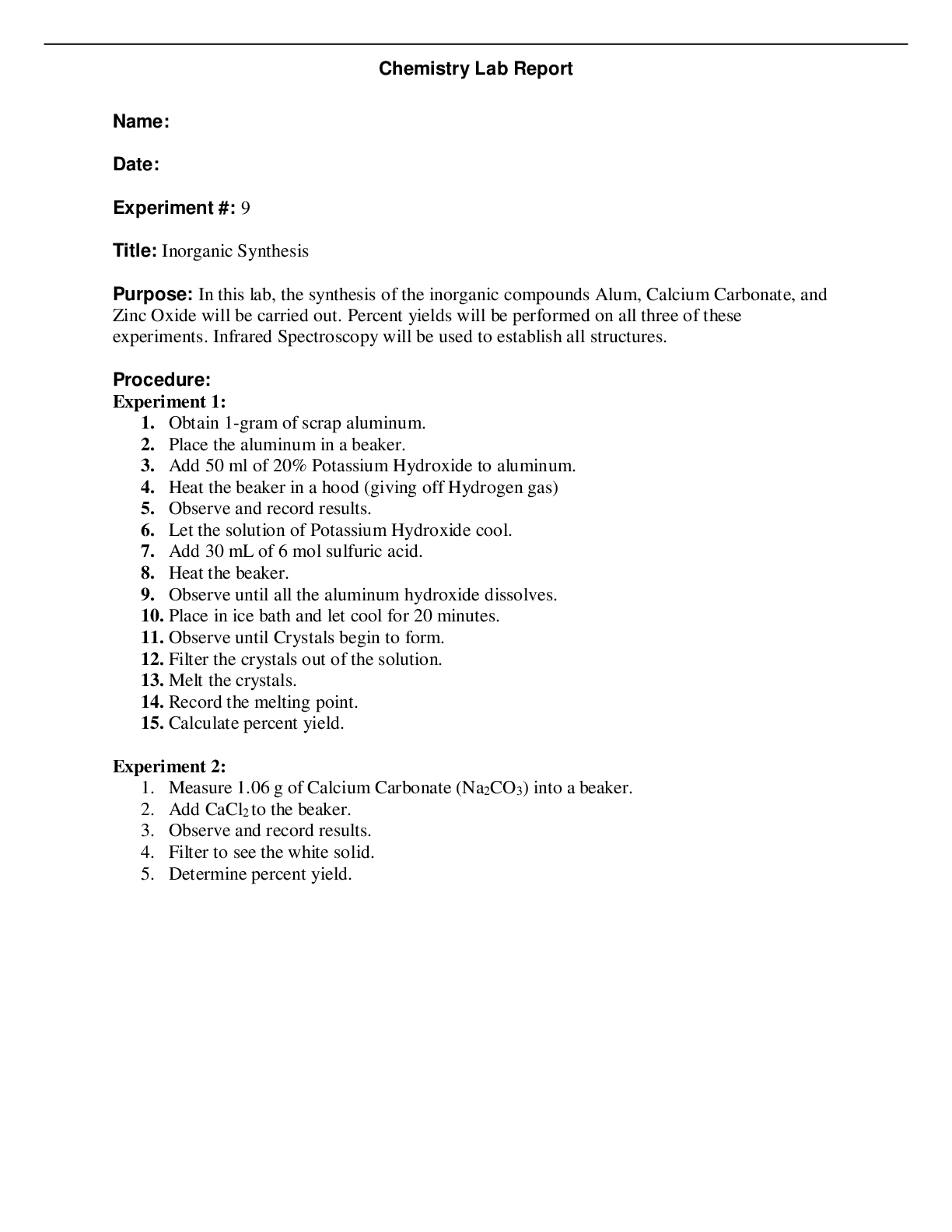
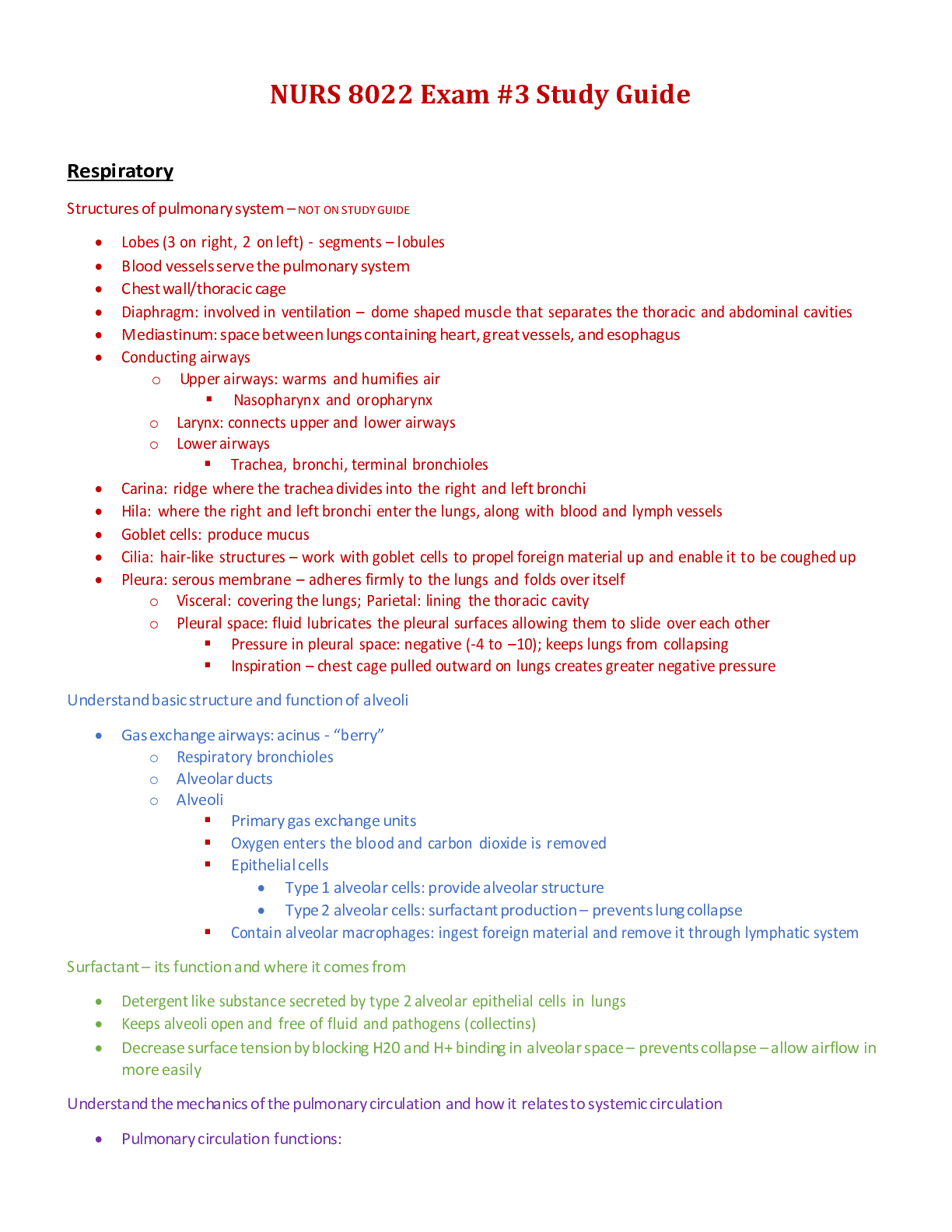

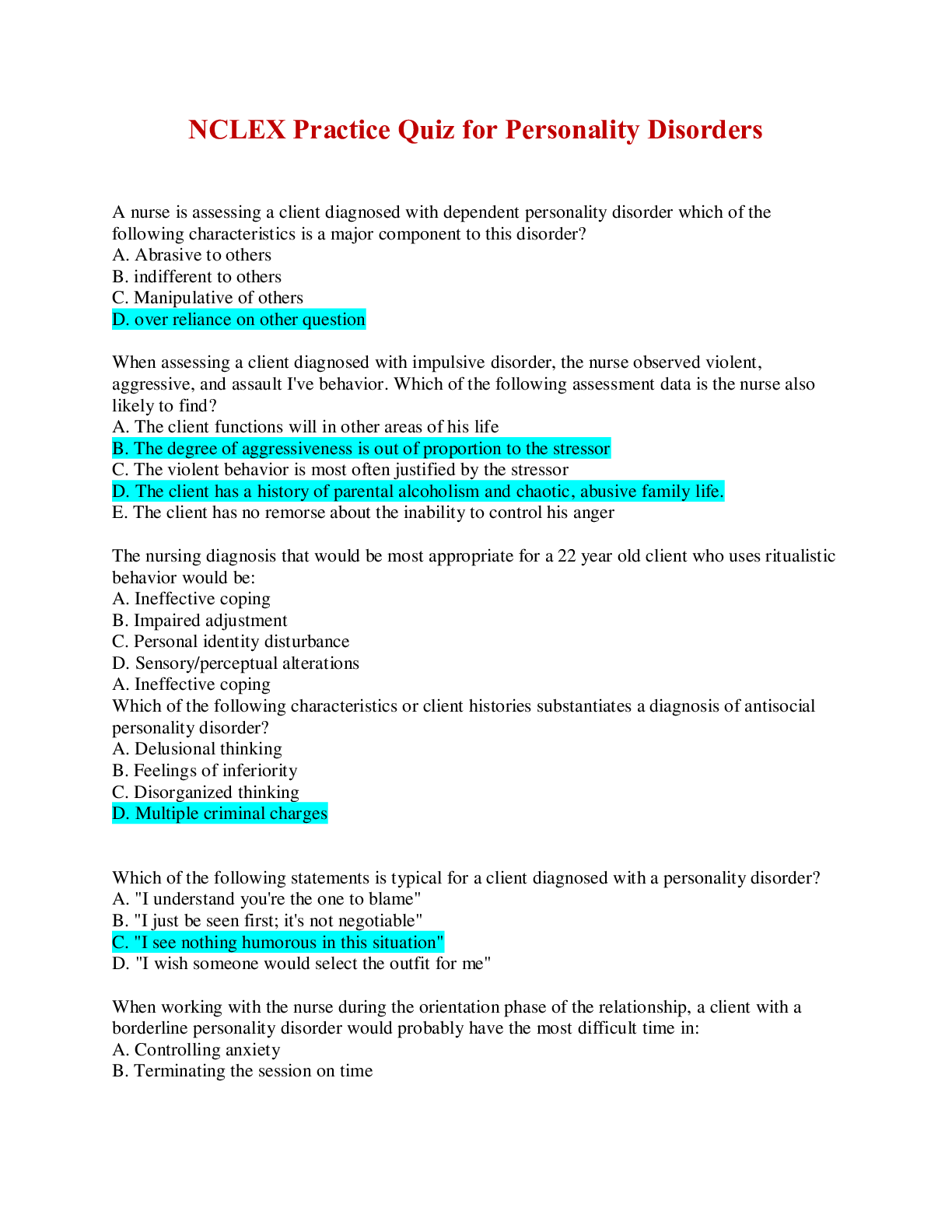



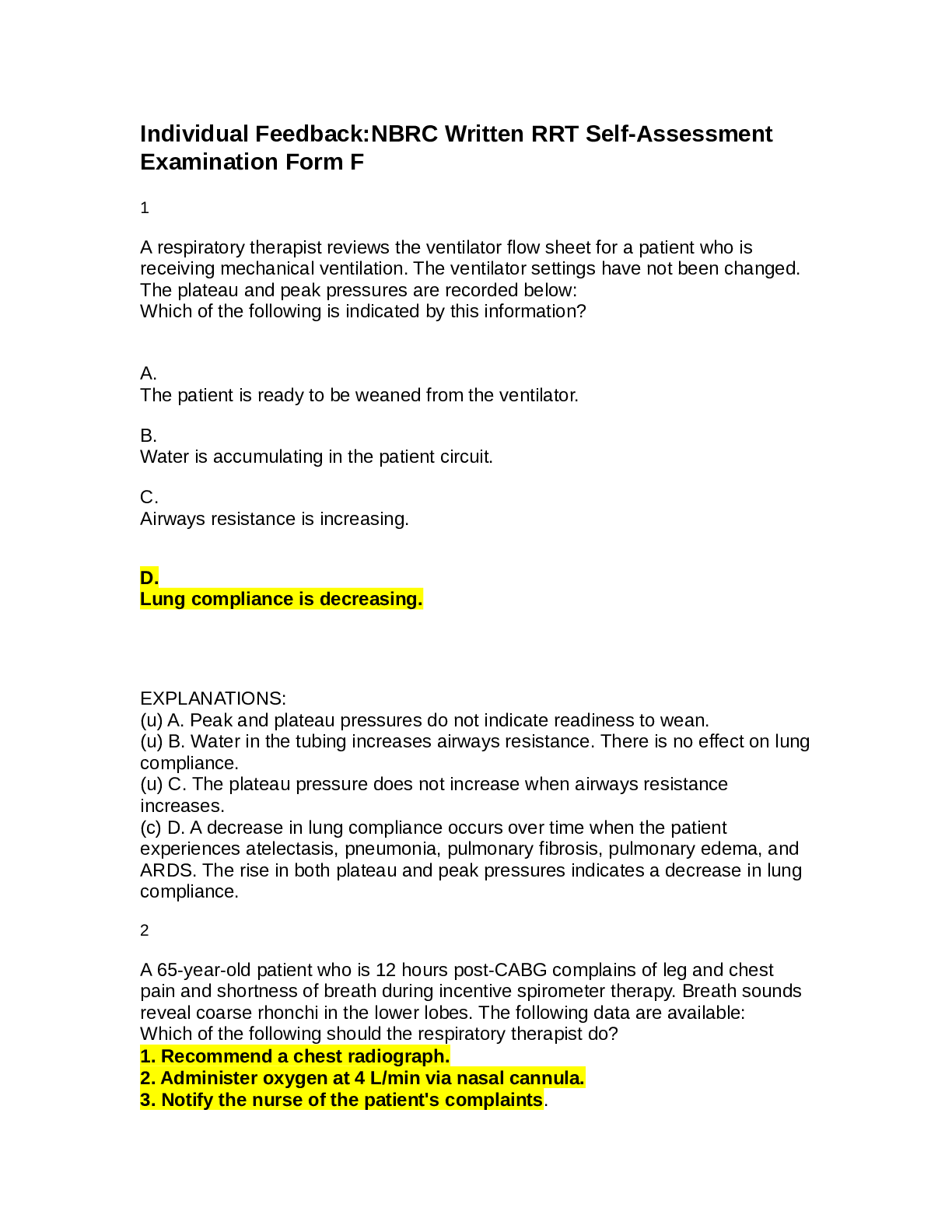
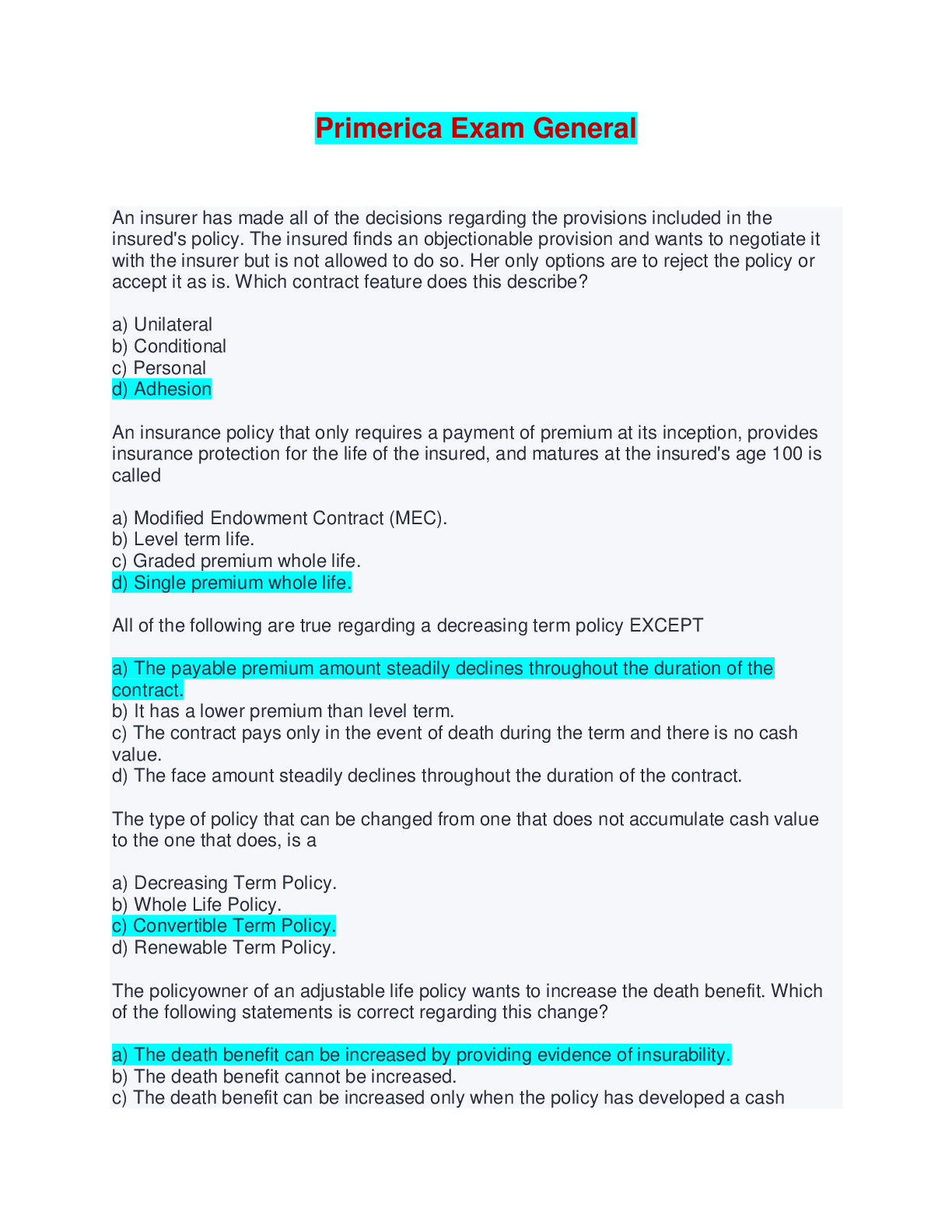


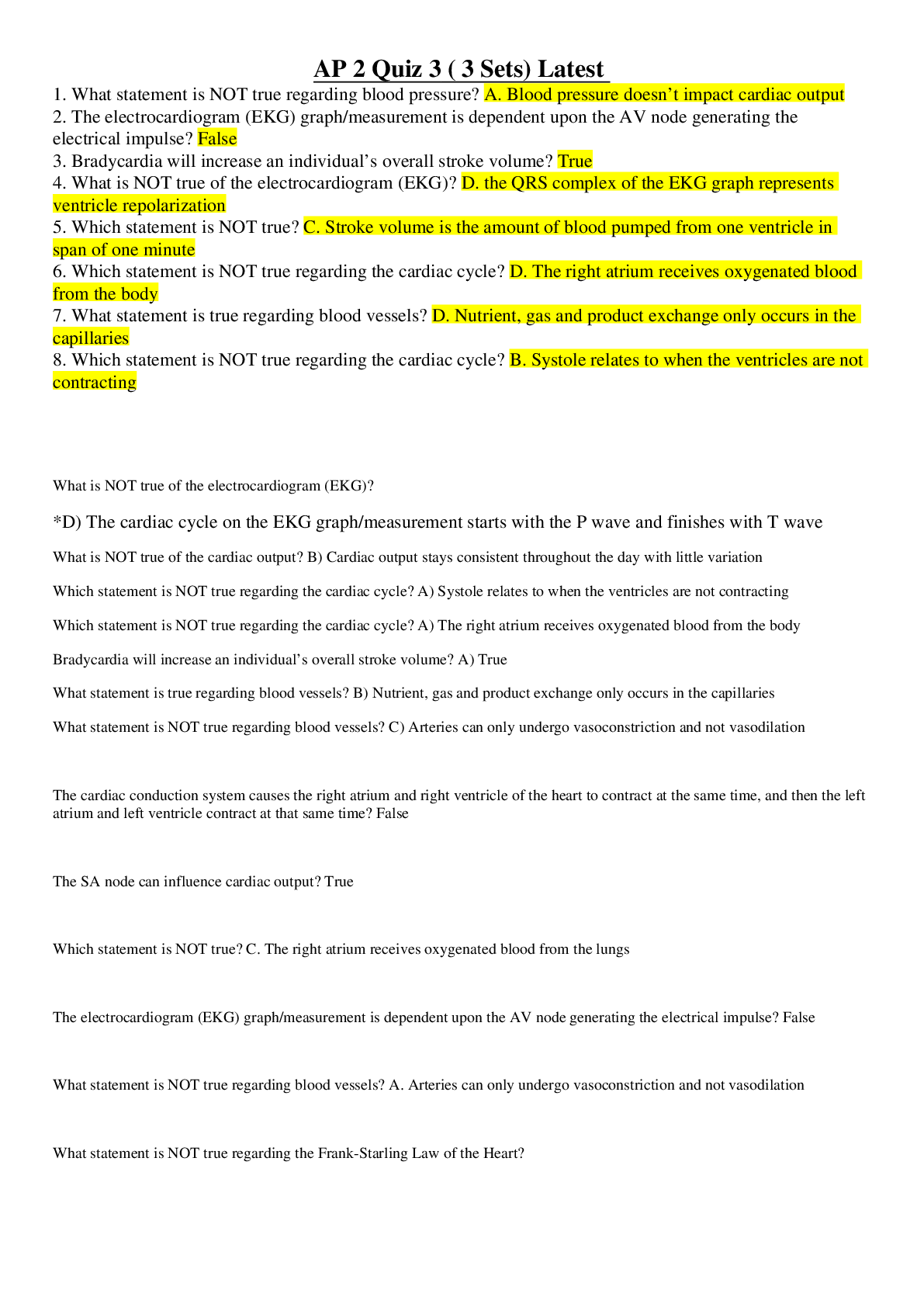
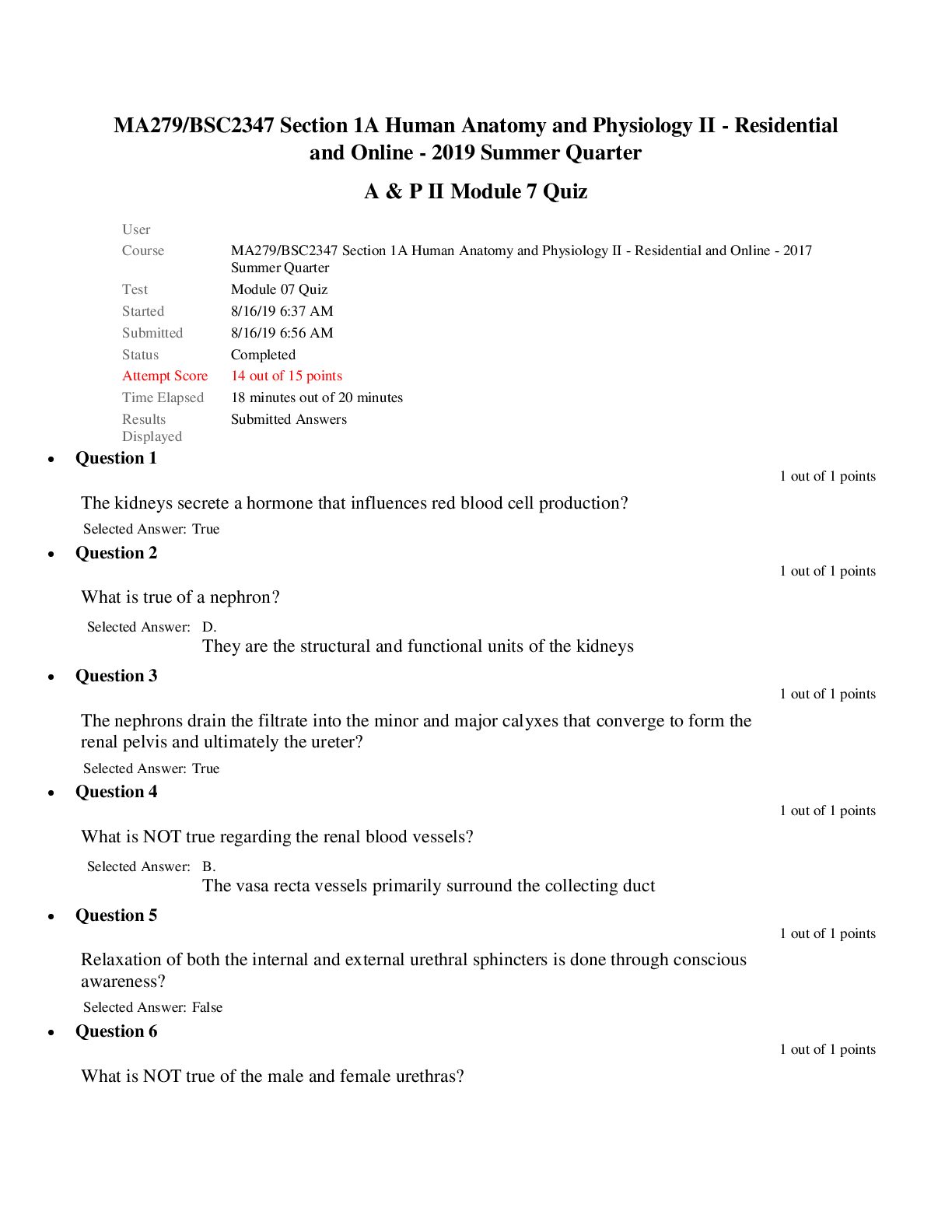


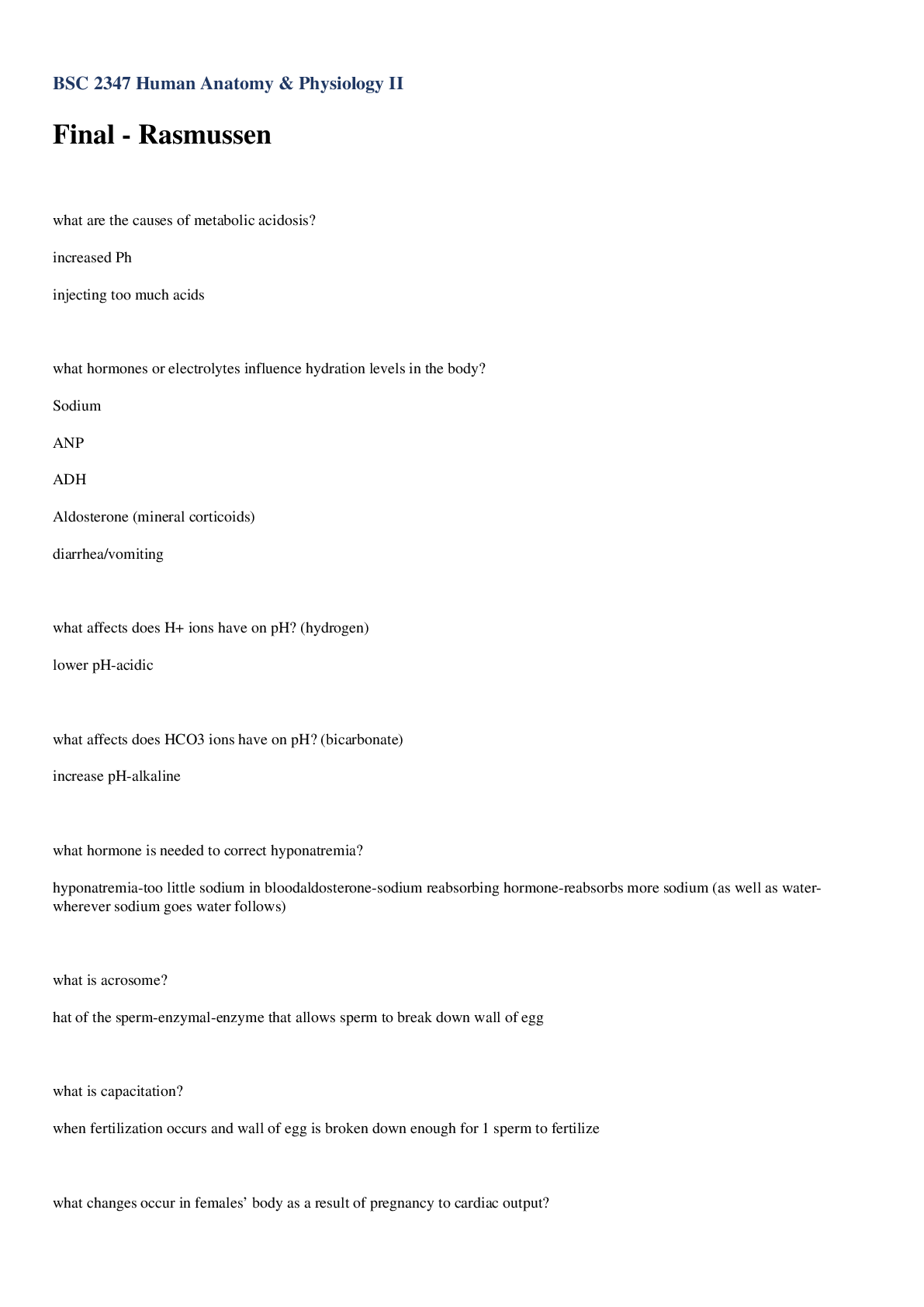
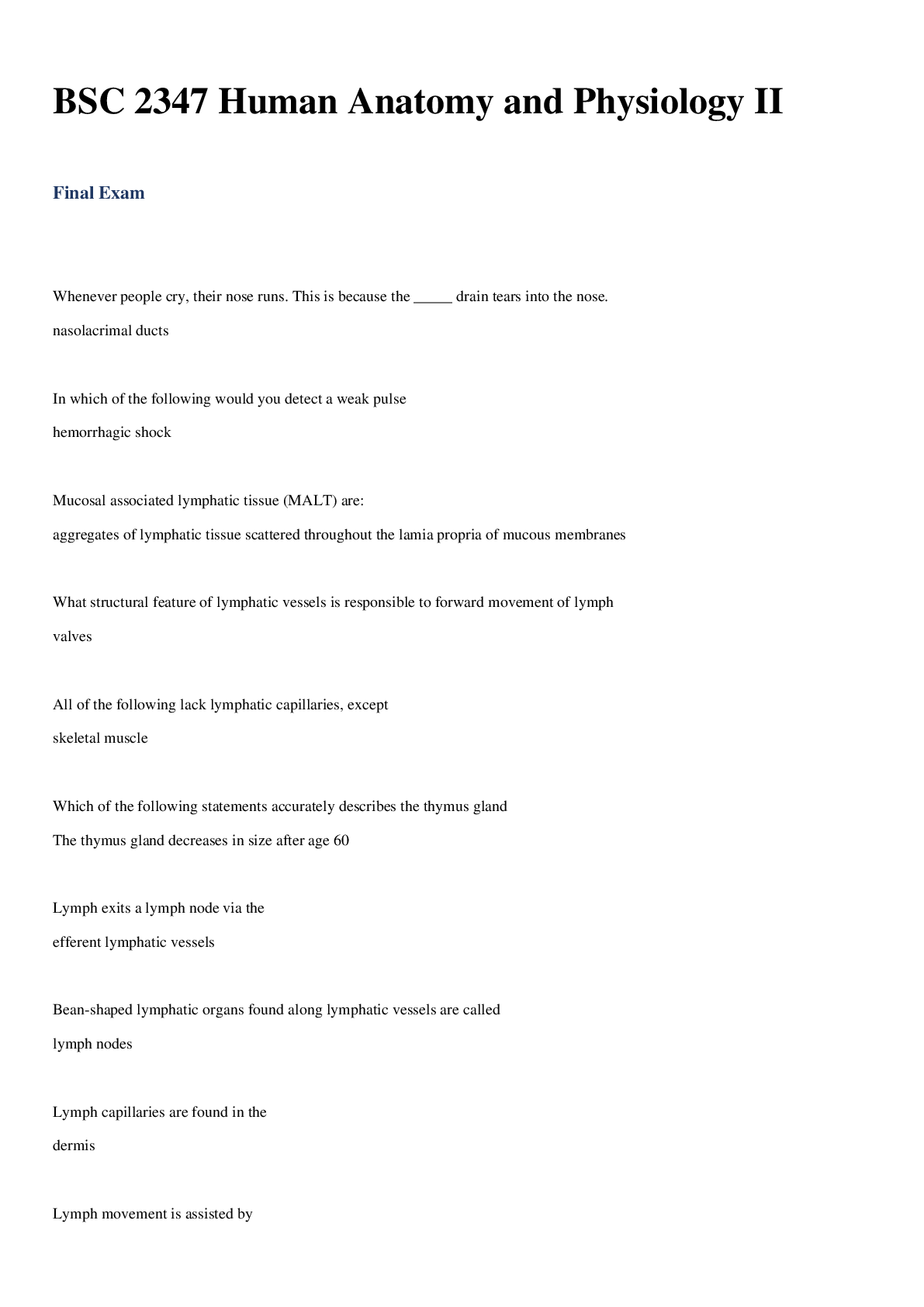
.png)
 Final Exam Essay Questions.png)
 Midterm Essay Questions.png)

.png)

